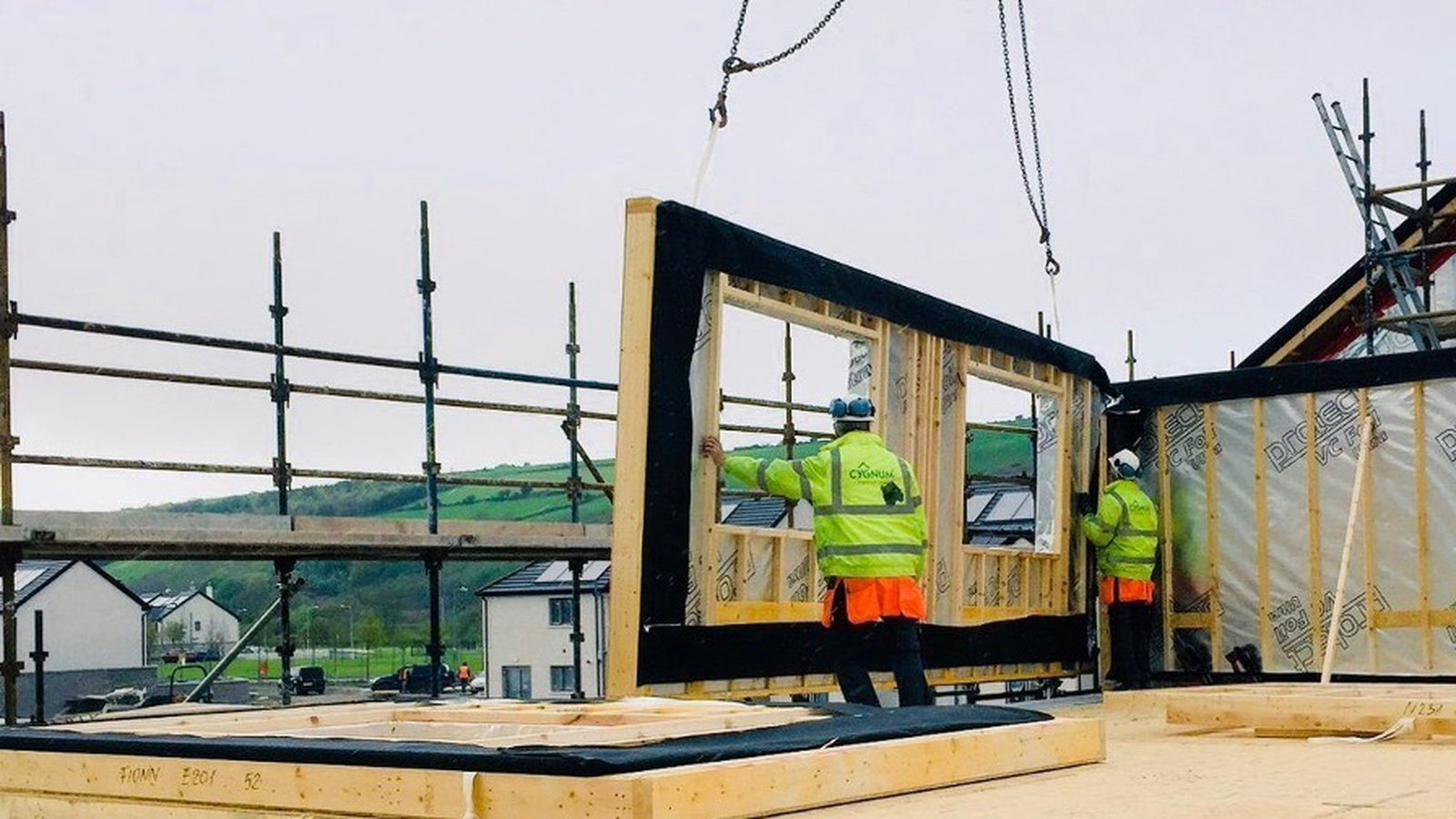World
Call to increase use of timber in new build construction

It is critically important the Government takes immediate action to increase the use of timber instead of concrete in the construction of new buildings and promotes sustainable building methods, according to a new report.
The Climate Change Advisory Council (CCAC) is also calling for the establishment of a high-level cross departmental task force to develop and expand all aspects of the timber industry as a substitute for carbon intensive concrete production.
The report is an examination of how the industry and waste sectors are living up to their climate responsibilities and what they must do to reduce greenhouse gas emissions.
Cement production is extremely carbon intensive and is one of the primary sources of emissions in Ireland.
According to the report, it is critical that the Government reduces cement use by supporting sustainable construction methods.
Rapidly increasing the use of timber in all new buildings in Ireland and implementing modern methods of construction is key.
The report highlighted that about 24% of new builds here in 2020 were constructed using timber frames, compared with 83% in Scotland.
This shows how much more scope there is for Ireland’s construction sector to lock away more carbon and avoid significant greenhouse gas emissions, the CCAC said.
It also highlighted that introducing whole-life carbon assessments and targets in the planning process for public buildings is required to help achieve the sectoral target.
CCAC Chair Marie Donnelly said: “Updates to the building regulations that support increased use of timber in construction should be consolidated with the establishment of a high-level cross departmental task force.
“Targets must be set, and measures introduced that support the reduction of emissions in cement production.
“The introduction of financial incentives to encourage retrofitting of existing buildings over demolition and rebuilding would also help reduce cement demand.”
Cement is the most widely used material on Earth.
It is responsible for more than 7% of global emissions, which is more than shipping, aviation and long-haul trucking combined.
Most of the emissions associated with cement and concrete come from the production of clinker, a critical ingredient made by heating limestone and minerals at extremely high temperatures in a kiln.
Industrial emissions in Ireland are dominated by the greenhouse gas emissions coming from just four cement plants, located at Drogheda, Limerick, Ballyconnell and Kinnegad.
It is estimated that around half of the production at these four sites is exported, the majority of which is UK bound.
Modern methods of construction encourage products such as cross-laminated timber and timber frame that can replace concrete and steel in many applications, such as floors, roofs, walls, and stairs, due to their strength and versatility.

The report said the challenge of satisfying housing demand in the coming years while decarbonising the construction sector can be partially mitigated with an increase in the use of timber in construction projects.
However, it said there is an urgent need for more detail in terms of how the expansion of timber frame construction will be realised and its linkage to commercial forestry in Ireland.
Efficiency in design and construction is another approach that the report said is crucial for achieving a reduction in the emissions associated with construction.
It recommended that all publicly supported construction should meet the requirements of the Royal Institute of the Architects of Ireland’s 2030 climate challenge.
This would require between 33% and 66% less energy demand, 40% less embodied carbon, and 24% less water usage along with improvements to site biodiversity and achieving core health and wellbeing targets.
Decarbonisation roadmap for industrial heat needed – CCAC
In addition to the focus on the construction and cement sectors, the CCAC also called on the Government to urgently publish the decarbonisation roadmap for industrial heat.
This would provide policy direction to guide industry in investment decisions and support switching away from carbon-intensive fossil fuel energy sources, it said.
The CCAC also noted that methane produced by decomposition in landfill sites is the largest contributor to waste emissions, which increased by 7% in 2022.
In 2022, Ireland’s circularity rate, which is a measure of the proportion of waste material that is recovered and returned to the economy, declined to 1.8% from 1.9% in 2021 and is significantly below the EU average of 11.5%.
The report said too much waste is being produced and the rates of reuse and recycling are considerably below the EU average.
Call for support for businesses to plan for climate change
Commenting, Julie Sinnamon, a CCAC member, said: “Our review recommends the creation of a just transition plan for jobs supporting those who are most impacted by the transition to low carbon economy.
“This must include a coordinated Government assessment of the skills required to deliver our national climate objective.
“Relevant State education agencies and employers would then be able to make training investments in support of a transition pathway for the industrial sector that does not disadvantage sections of the workforce and the wider community.
“Business has an important role to play increasing our resilience to climate change, and the challenges presented to businesses from our changing climate cannot be underestimated.
“While current supports are generally more reactive to weather events, supporting our business sector to plan for and manage climate change risks will help strengthen sectors of our economy that are already experiencing significant impacts of climate change.
“Further targeted initiatives are required to capitalise on opportunities for adaptation to climate change, including funding support for businesses to develop products and services that promote new innovations in adaptation.”










